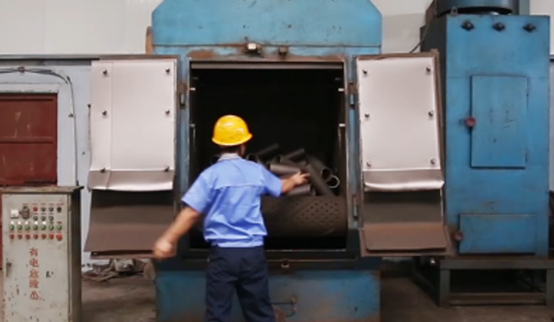 Afrikaans
Afrikaans  Albanian
Albanian  Amharic
Amharic  Arabic
Arabic  Armenian
Armenian  Azerbaijani
Azerbaijani  Basque
Basque  Belarusian
Belarusian  Bengali
Bengali  Bosnian
Bosnian  Bulgarian
Bulgarian  Catalan
Catalan  Cebuano
Cebuano  Corsican
Corsican  Croatian
Croatian  Czech
Czech  Danish
Danish  Dutch
Dutch  English
English  Esperanto
Esperanto  Estonian
Estonian  Finnish
Finnish  French
French  Frisian
Frisian  Galician
Galician  Georgian
Georgian  German
German  Greek
Greek  Gujarati
Gujarati  Haitian Creole
Haitian Creole  hausa
hausa  hawaiian
hawaiian  Hebrew
Hebrew  Hindi
Hindi  Miao
Miao  Hungarian
Hungarian  Icelandic
Icelandic  igbo
igbo  Indonesian
Indonesian  irish
irish  Italian
Italian  Japanese
Japanese  Javanese
Javanese  Kannada
Kannada  kazakh
kazakh  Khmer
Khmer  Rwandese
Rwandese  Korean
Korean  Kurdish
Kurdish  Kyrgyz
Kyrgyz  Lao
Lao  Latin
Latin  Latvian
Latvian  Lithuanian
Lithuanian  Luxembourgish
Luxembourgish  Macedonian
Macedonian  Malgashi
Malgashi  Malay
Malay  Malayalam
Malayalam  Maltese
Maltese  Maori
Maori  Marathi
Marathi  Mongolian
Mongolian  Myanmar
Myanmar  Nepali
Nepali  Norwegian
Norwegian  Norwegian
Norwegian  Occitan
Occitan  Pashto
Pashto  Persian
Persian  Polish
Polish  Portuguese
Portuguese  Punjabi
Punjabi  Romanian
Romanian  Russian
Russian  Samoan
Samoan  Scottish Gaelic
Scottish Gaelic  Serbian
Serbian  Sesotho
Sesotho  Shona
Shona  Sindhi
Sindhi  Sinhala
Sinhala  Slovak
Slovak  Slovenian
Slovenian  Somali
Somali  Spanish
Spanish  Sundanese
Sundanese  Swahili
Swahili  Swedish
Swedish  Tagalog
Tagalog  Tajik
Tajik  Tamil
Tamil  Tatar
Tatar  Telugu
Telugu  Thai
Thai  Turkish
Turkish  Turkmen
Turkmen  Ukrainian
Ukrainian  Urdu
Urdu  Uighur
Uighur  Uzbek
Uzbek  Vietnamese
Vietnamese  Welsh
Welsh  Bantu
Bantu  Yiddish
Yiddish  Yoruba
Yoruba  Zulu
Zulu Rubber Lagging Solutions for Enhanced Pulley Performance and Durability
Pulley Lagging Rubber Enhancing Efficiency and Durability in Conveyor Systems
Pulley lagging rubber plays a crucial role in the functionality and longevity of conveyor systems across various industries. As the heart of material handling, pulleys must operate efficiently to ensure smooth transportation of goods. Lagging, a rubber layer applied to the surface of pulleys, enhances traction between the conveyor belt and pulley, thereby reducing slippage and improving overall performance.
One of the primary advantages of using rubber lagging is its ability to increase friction. When a conveyor belt operates, it relies on a tight grip on the pulley to maintain movement without slipping. Rubber lagging provides the necessary traction, especially in heavy-duty applications where materials can be abrasive and the risk of slippage is high. This is particularly essential in industries such as mining, where large volumes of ore or coal are transported, necessitating reliable and efficient systems to handle the load.
In addition to improving grip, pulley lagging rubber also offers protection to the pulley itself. The continuous wear and tear from the conveyor belt can damage the surface of the pulley, leading to costly downtime and replacements. By applying a layer of rubber lagging, the pulley is shielded from abrasion and other damaging factors, extending its operational life significantly.
pulley lagging rubber

Moreover, rubber lagging can be customized to meet specific operational demands. Options such as varying thickness, texture, and hardness allow businesses to optimize their pulleys for specific environments and material types. For instance, a rough surface might be preferred for materials that require a higher grip, while a smoother texture could be advantageous in applications involving lighter materials.
Maintenance is another critical aspect where pulley lagging rubber shines. Regular inspections of lagging can prevent unexpected failures, ensuring that any wear is addressed before it leads to severe issues. This proactive approach not only enhances system reliability but also reduces overall maintenance costs.
In conclusion, pulley lagging rubber is an essential component in maximizing the efficiency and durability of conveyor systems. By improving traction, providing protection, and offering customization options, it ensures that industries operate smoothly and effectively. As technology advances, the development of new rubber formulations and designs will continue to enhance the performance of pulley lagging, contributing to safer and more efficient material handling operations.
-
Revolutionizing Conveyor Reliability with Advanced Rubber Lagging PulleysNewsJul.22,2025
-
Powering Precision and Durability with Expert Manufacturers of Conveyor ComponentsNewsJul.22,2025
-
Optimizing Conveyor Systems with Advanced Conveyor AccessoriesNewsJul.22,2025
-
Maximize Conveyor Efficiency with Quality Conveyor Idler PulleysNewsJul.22,2025
-
Future-Proof Your Conveyor System with High-Performance Polyurethane RollerNewsJul.22,2025
-
Driving Efficiency Forward with Quality Idlers and RollersNewsJul.22,2025





























